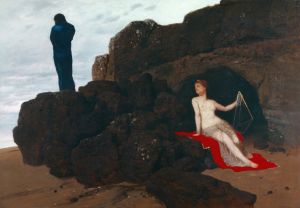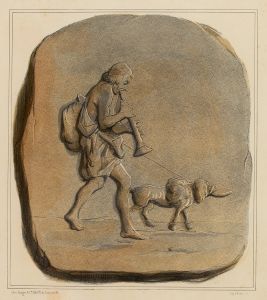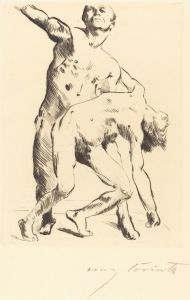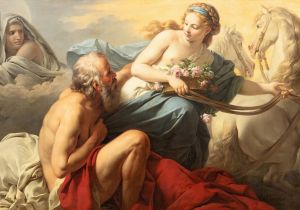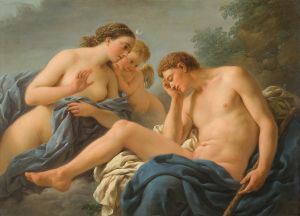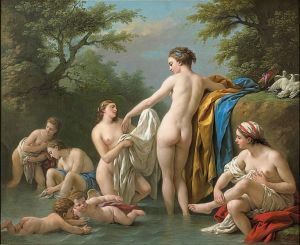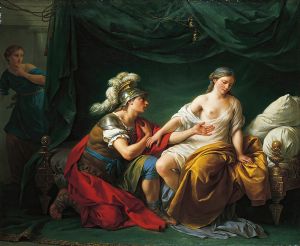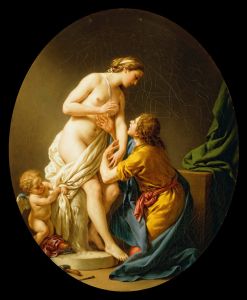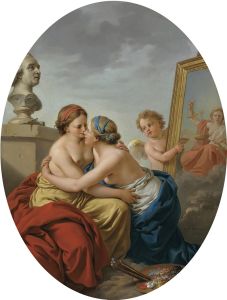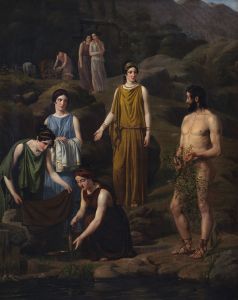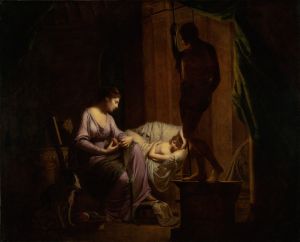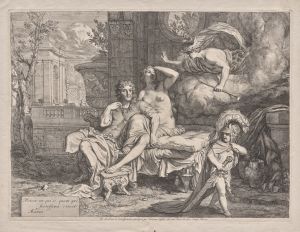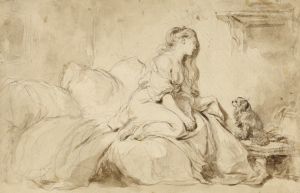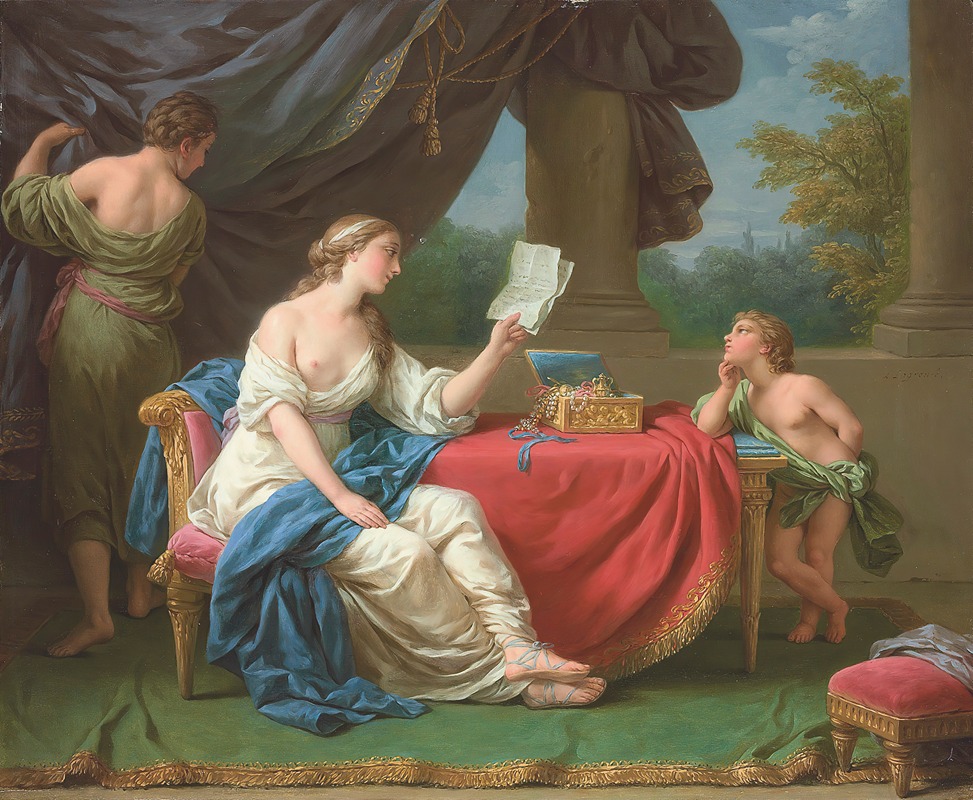
Penelope Reading A Letter From Odysseus
A hand-painted replica of Louis-Jean-François Lagrenée’s masterpiece Penelope Reading A Letter From Odysseus, meticulously crafted by professional artists to capture the true essence of the original. Each piece is created with museum-quality canvas and rare mineral pigments, carefully painted by experienced artists with delicate brushstrokes and rich, layered colors to perfectly recreate the texture of the original artwork. Unlike machine-printed reproductions, this hand-painted version brings the painting to life, infused with the artist’s emotions and skill in every stroke. Whether for personal collection or home decoration, it instantly elevates the artistic atmosphere of any space.
Louis-Jean-François Lagrenée was an 18th-century French painter known for his works in the Rococo and Neoclassical styles. One of his notable paintings is "Penelope Reading a Letter from Odysseus." This artwork captures a scene from Homer's epic, "The Odyssey," which tells the story of Odysseus's long journey home after the Trojan War and his wife Penelope's steadfast loyalty during his absence.
In the painting, Lagrenée depicts Penelope, the wife of Odysseus, as she reads a letter from her long-absent husband. The scene is imbued with emotion, capturing Penelope's longing and hope as she clings to the words of Odysseus. The composition of the painting is carefully arranged to highlight Penelope's introspective moment, with her expression and posture conveying a sense of patience and devotion.
Lagrenée's style in this painting reflects the transition from the ornate Rococo to the more restrained Neoclassical approach. The use of soft colors and delicate brushwork is characteristic of the Rococo, while the focus on classical themes and the clarity of form align with Neoclassical ideals. This blend of styles is evident in the way Lagrenée portrays Penelope with both grace and emotional depth.
The painting is also notable for its attention to detail, particularly in the depiction of Penelope's attire and surroundings. Her clothing is rendered with intricate patterns and textures, suggesting her noble status and the wealth of her household. The setting, while not overly elaborate, includes elements that evoke the ancient world, grounding the scene in its mythological context.
"Penelope Reading a Letter from Odysseus" is an example of how Lagrenée and his contemporaries drew inspiration from classical literature and mythology, a common practice in the art of the time. By choosing a subject from "The Odyssey," Lagrenée taps into themes of love, fidelity, and the enduring human spirit, which resonated with audiences of his era and continue to do so today.
The painting is part of Lagrenée's broader body of work, which includes historical, religious, and mythological subjects. His ability to convey complex emotions and narratives through his art earned him recognition and patronage during his lifetime. Lagrenée held prestigious positions, such as a professor at the Académie Royale de Peinture et de Sculpture and a director of the French Academy in Rome, which further solidified his influence in the art world.
While specific details about the provenance and current location of "Penelope Reading a Letter from Odysseus" may not be widely documented, Lagrenée's work remains an important part of the study of 18th-century French painting. His contributions to the transition between Rococo and Neoclassicism highlight the evolving tastes and artistic priorities of his time.





